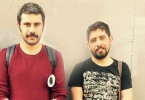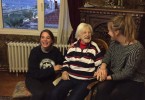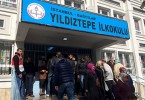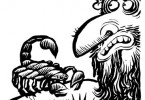Aslı TUNÇ
While the country was totally immersed into a collective voyeurism craze with Baykal’s bedroom footage, I set out to Diyarbakır with a coterie of prominent Turkish journalists and scholars. We were invited by International Press Institute’s Turkish branch to talk about media, empathy and peace with local journalists. The main idea was to discuss how the mainstream media distort the Kurdish issue, how we can maintain empathy towards the Kurdish population and most importantly how we can listen to the problems of local journalists. It would be my first time to visit the “East.” “You will now see the Turkish reality with your own eyes” said my closest friend, “it was time, don’t you think?” she added with a sarcastic smile. I was not sure how much I could experience in such a short visit and under such a protected setting. However that proved to be the wrong.
The plane landed in Diyarbakır airport at night and I started walking to the nearest light in the dark along with other passengers. My first encounter was an intoxicating smell in the air. It was a warm and welcoming spring night. The bus took us through the medieval city walls up to the hills near the bridge with ten arches on Tigris River. In the surreal atmosphere of distant rhythm of drums, tambur and sad lyrics of Kurdish songs, we have been warmly greeted by the mayor of the city, Osman Baydemir and other Kurdish politicians.
A one-day seminar gave us the opportunity to discuss the problems of alternative press’s and Kurdish journalists’ problems. For instance an editor complained how they could not keep a subscribers’ list for security reasons or how journalists could not even carry a note pad let alone a camera that exposes their profession. Life was tough, it was no joke. Even the basic needs and necessities of the profession were out of the question. The political tension was in the air and the problems, contradictions, dilemmas were real. Young local journalists expressed their frustration about the “Westerners’” perception of their people. They were disgruntled about the news language the mainstream national media use, their discriminatory coverage in sports, columnists’ distorting realities and the profound ignorance of editors. They were fed up to be mute and invisible. They were bitter about not being able to distribute their local newspapers. What we academicians said felt deeply theoretical and trivial. The question was grand: how can we make things better on many levels by taking concrete steps? I guess even starting with tiny steps of dialogue was something. I needed to settle with that at the moment.
The next day, we were taken on a city tour. We wandered through the black basalt buildings of the old city and through the landmarks of Roman, Byzantine and Ottoman Empires. Our pleasant journey came to an end where Diyarbakir has been described as “an inferno of torture and murder”. We visited the notorious prison and torture chambers walking among the signs of extreme poverty, and high unemployment. We realized that the city center was shifting from the ancient area to the periphery with newly constructed high-rise buildings for upper-middle class population. This part of the city was presented to us as the “changing face of the city” with an obvious pride. Those spacious but quite ugly buildings were the symbols of modernization for many residents.
I left Diyarbakır a few days ago. But I am pretty sure I will go back some day because as a Kurdish poet says “the East grows in you.”







